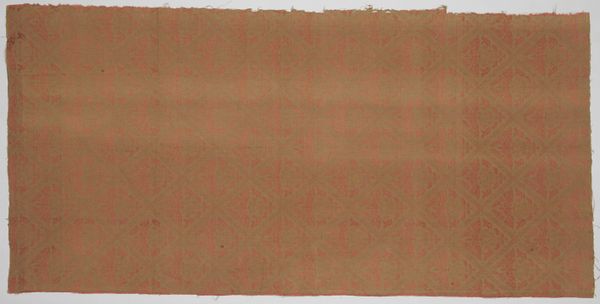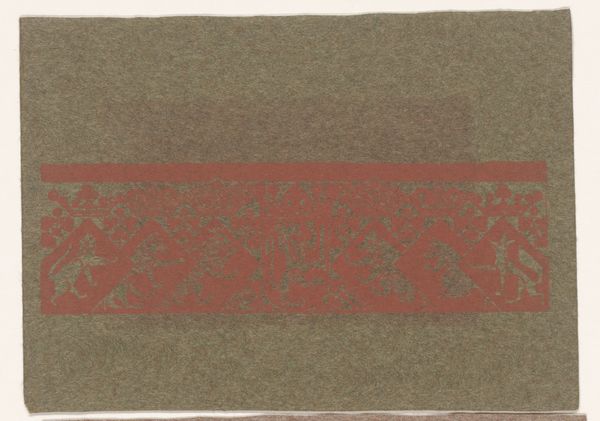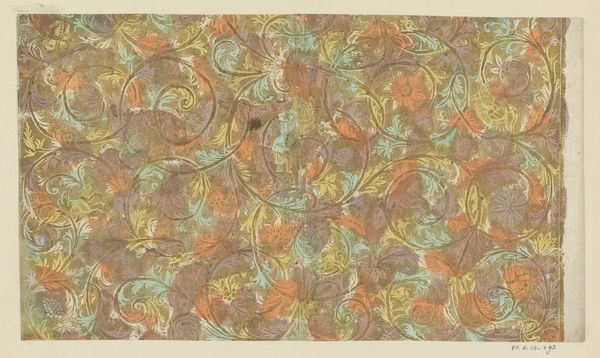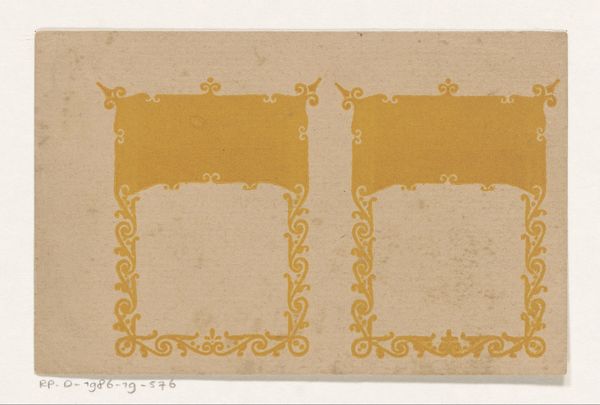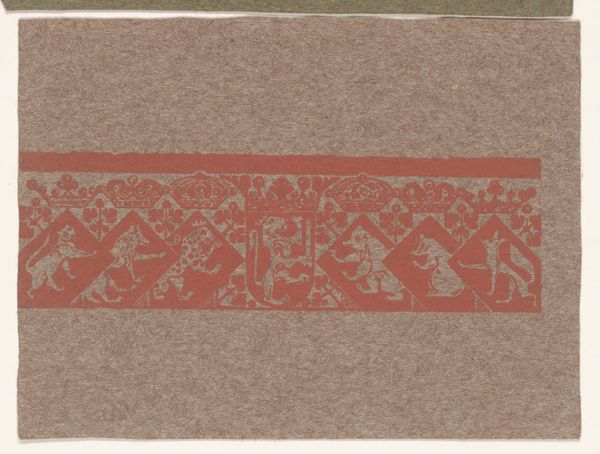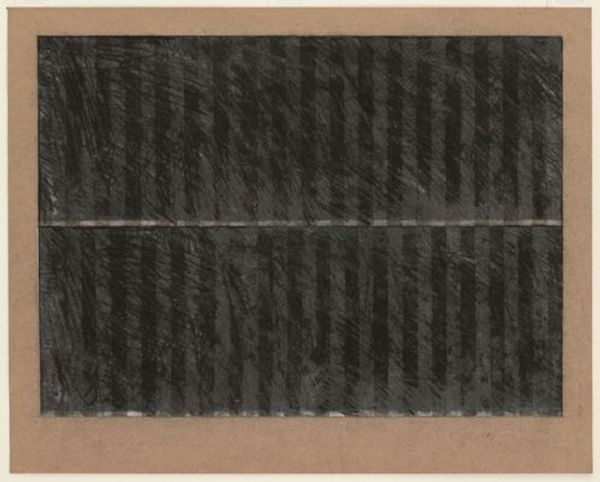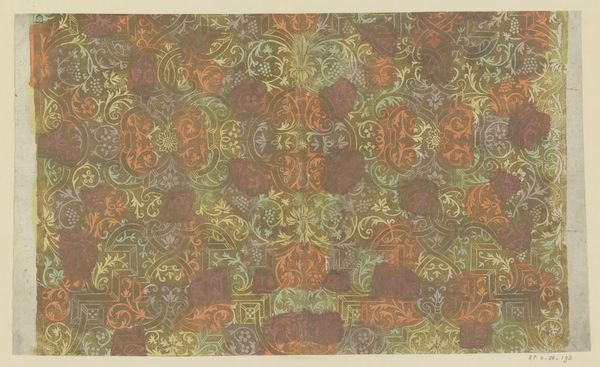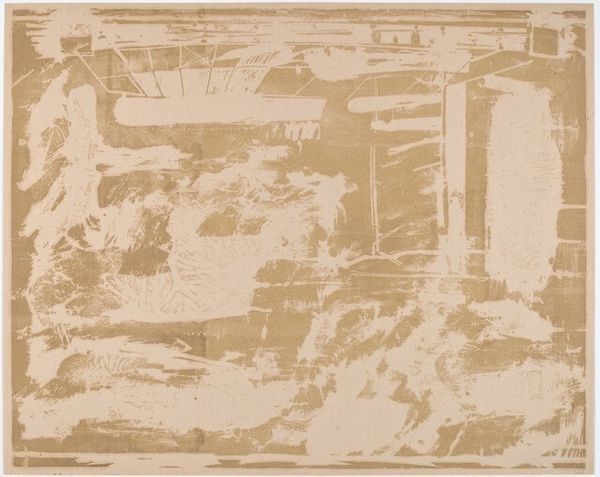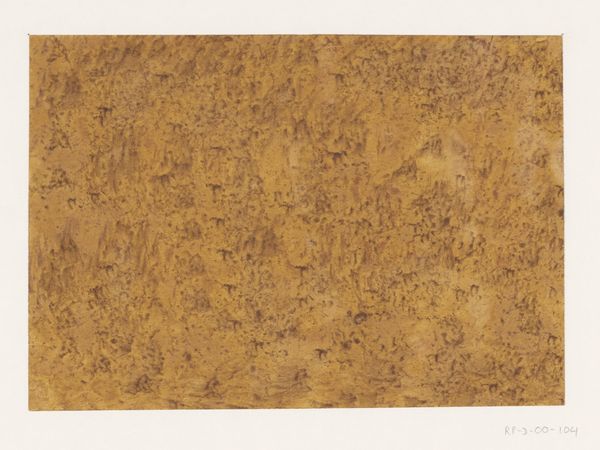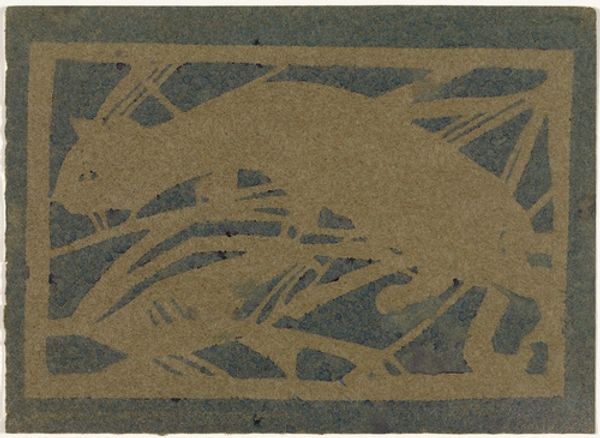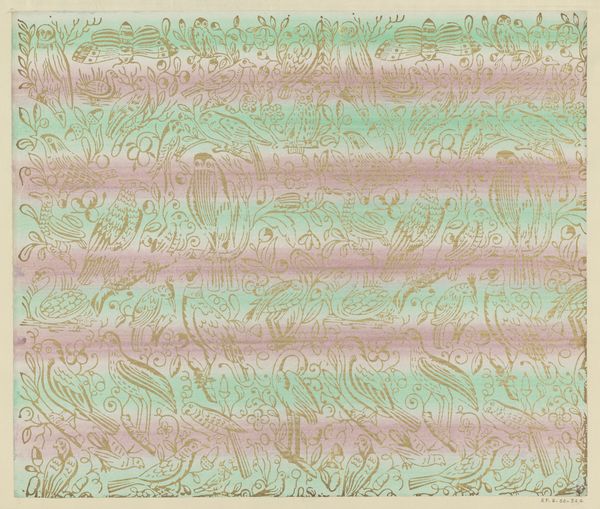
drawing, print, paper, ink
#
drawing
# print
#
paper
#
ink
#
geometric
Dimensions: height 124 mm, width 171 mm
Copyright: Rijks Museum: Open Domain
Editor: Here we have Bernard Willem Wierink's "Lion, Owls and Monkeys," created around 1910. It's a print made with ink on paper, currently housed at the Rijksmuseum. The geometric quality and subdued colors are striking. What strikes you most about it? Curator: The artist's choice to combine drawing and printmaking is compelling. It bridges the gap between the unique handmade object and the reproducibility of the print. Consider the paper itself—what kind is it? How does its texture affect the ink's absorption? Wierink manipulates the means of production. This blending of high art and craft forces us to consider their relationship during the early 20th century. Editor: I see what you mean. The combination of those two methods really stands out. But the animal choices seem… unexpected. Lion, owls, monkeys… is there a relationship I’m missing? Curator: Think about the availability of these images. Were they sketched from life, perhaps at a zoo, or sourced from printed matter like children's books or scientific illustrations? The choice of animals, and their representational style, connects to the increasing urbanization and consumption of visual information in that era. It reflects society's relationship to the natural world, and perhaps the commodification of exotic creatures. Editor: That makes me rethink my initial reaction completely! It's not just a quirky composition, it's actually commenting on industrialization through materials and their consumption. Curator: Exactly! Consider how the accessibility and process of the printmaking medium allow the artist to address societal themes, making the work incredibly relevant. It's a blend of aesthetics and a critical view of the modes of artistic and commodity production. Editor: Thanks! I hadn't thought about it that way at all, now I have a different understanding of this artist and this artwork. Curator: My pleasure, thinking about the means through which we produce is very insightful and reveals much about a culture's underlying structures.
Comments
No comments
Be the first to comment and join the conversation on the ultimate creative platform.
